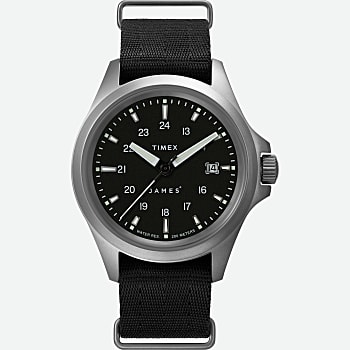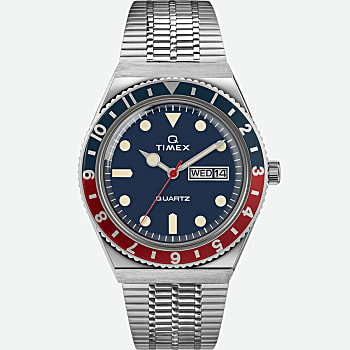When it comes to excellence, there is no finish line. Only the next lap. Lap 03 of the Canfield Speedway 44mm Automatic Chronograph is a testament to the craft of watchmaking. Inspired by master mechanics that pushed performance to the redline, this limited-edition automatic chronograph comes souped with a tachymeter—a scale on the bezel that converts time elapsed into speed travelled.
A 44mm sandblasted black PVD stainless steel case features a heavy coin edge and colorful anodized aluminum collars on the pushbuttons. The full exhibition caseback offers an unobstructed view of the customized Sellita movement at work. Two sub dials, styled after two-tone wheel designs, punctuate the matte velvet black dial. Like a pair of racing gloves, the perforated leather strap in black is the perfect complement to this hotrod.
With a unique badge and metal tray insert, the Canfield Speedway’s toolbox is a race-ready companion unlike any other. Dive into the story behind the watch with the included booklet and poster.
Move fast—this limited-edition timepiece won’t stick around long.






Reviews
There are no reviews yet.